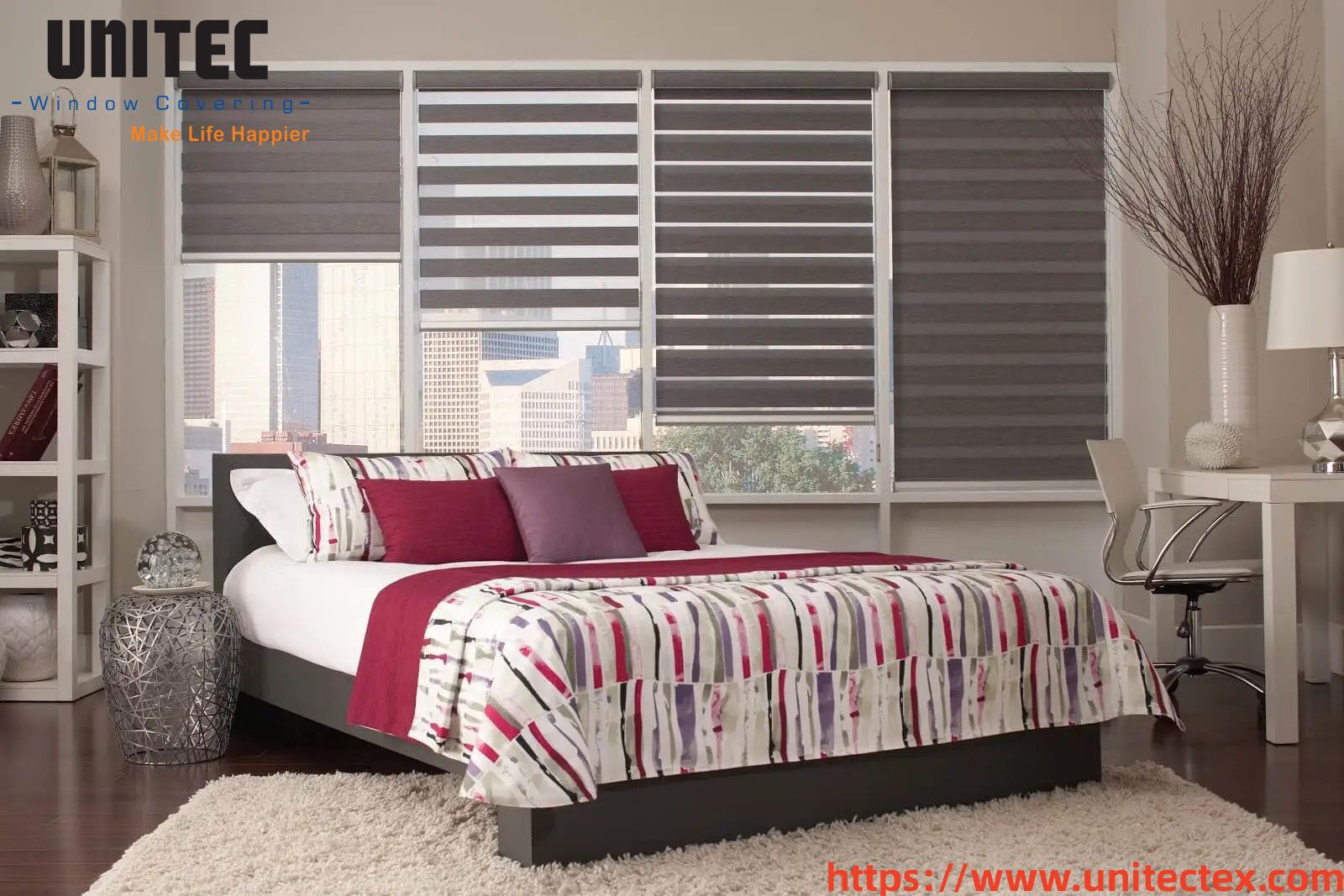
What Are Transitional Window Shades?
Transitional window shades, often referred to as zebra blinds or dual-layer shades, are innovative roller-style shades made from alternating bands of sheer and solid fabric. These layers pass over each other when you adjust the shade, allowing you to control how much light enters your space—without sacrificing your view or your privacy.
With a simple glide, you can transition from sheer visibility to full privacy. The result? A sleek, minimalist window treatment that’s as functional as it is fashionable.
Why Choose Transitional Window Shades?
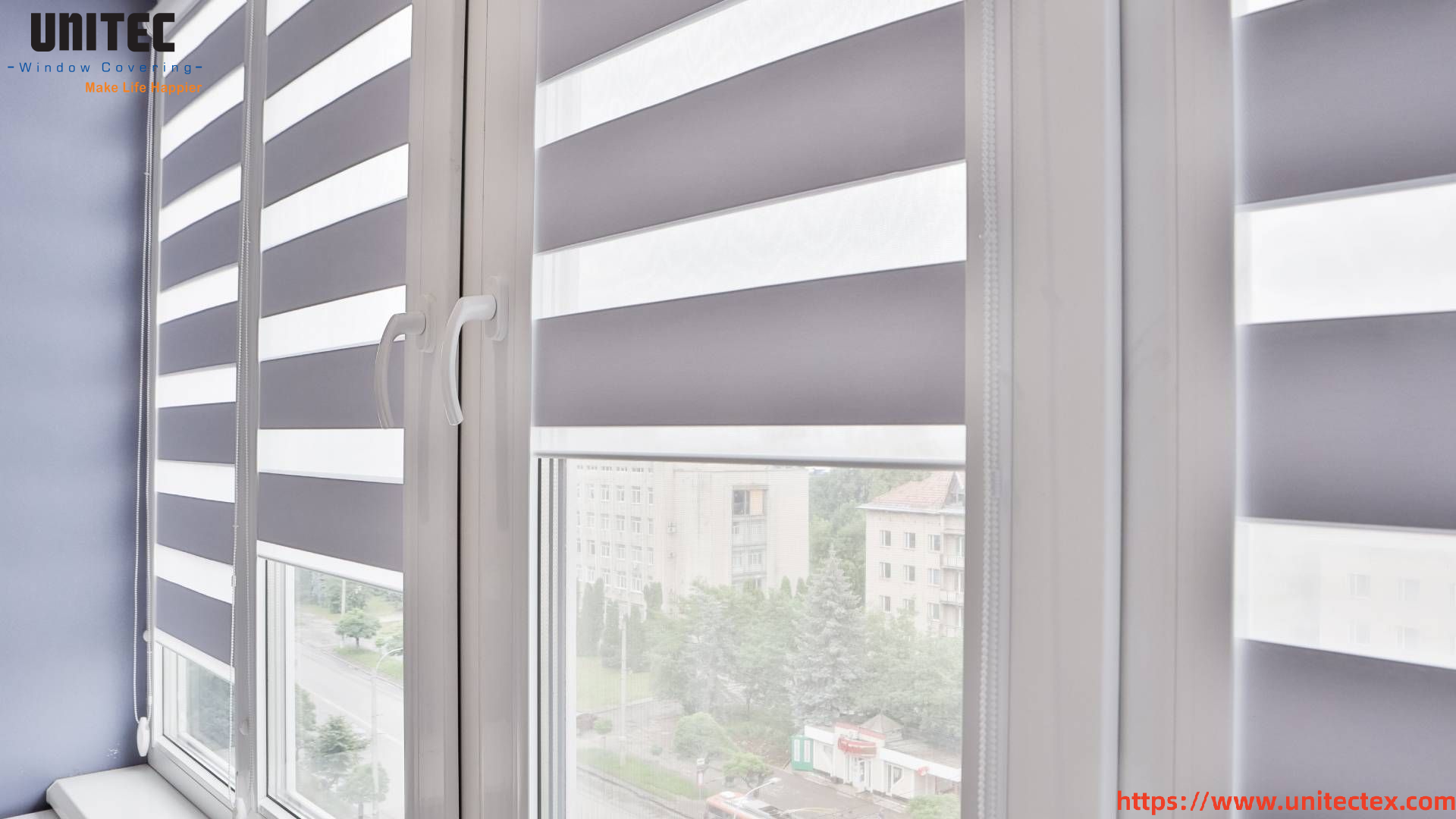
3. Space-Saving Design
Because transitional shades are mounted close to the window frame and roll neatly at the top, they’re ideal for small rooms or spaces with sleek architectural lines.
4. UV Protection & Energy Efficiency
Many transitional window shades are made with UV-blocking fabrics, helping to protect your furniture and floors from fading. Plus, the ability to filter or block sunlight can reduce heat gain and support your home’s energy efficiency.
5. Motorized & Smart Home Integration
Want ultimate convenience? Transitional window shades are compatible with motorized systems and smart home platforms, allowing you to schedule adjustments or control shades via app, remote, or voice command.
Here are some of the top reasons why transitional window shades are gaining popularity across residential and commercial spaces:
1. Dynamic Light Control
Unlike standard blinds, transitional window shades let you fine-tune the amount of light you want. Align the sheer layers to welcome daylight while maintaining some privacy, or shift the solid bands into place for total coverage.
2. Contemporary Aesthetic
These shades feature a streamlined, modern appearance that complements minimalist, contemporary, or Scandinavian interior styles. The alternating pattern creates visual interest without overwhelming the space.
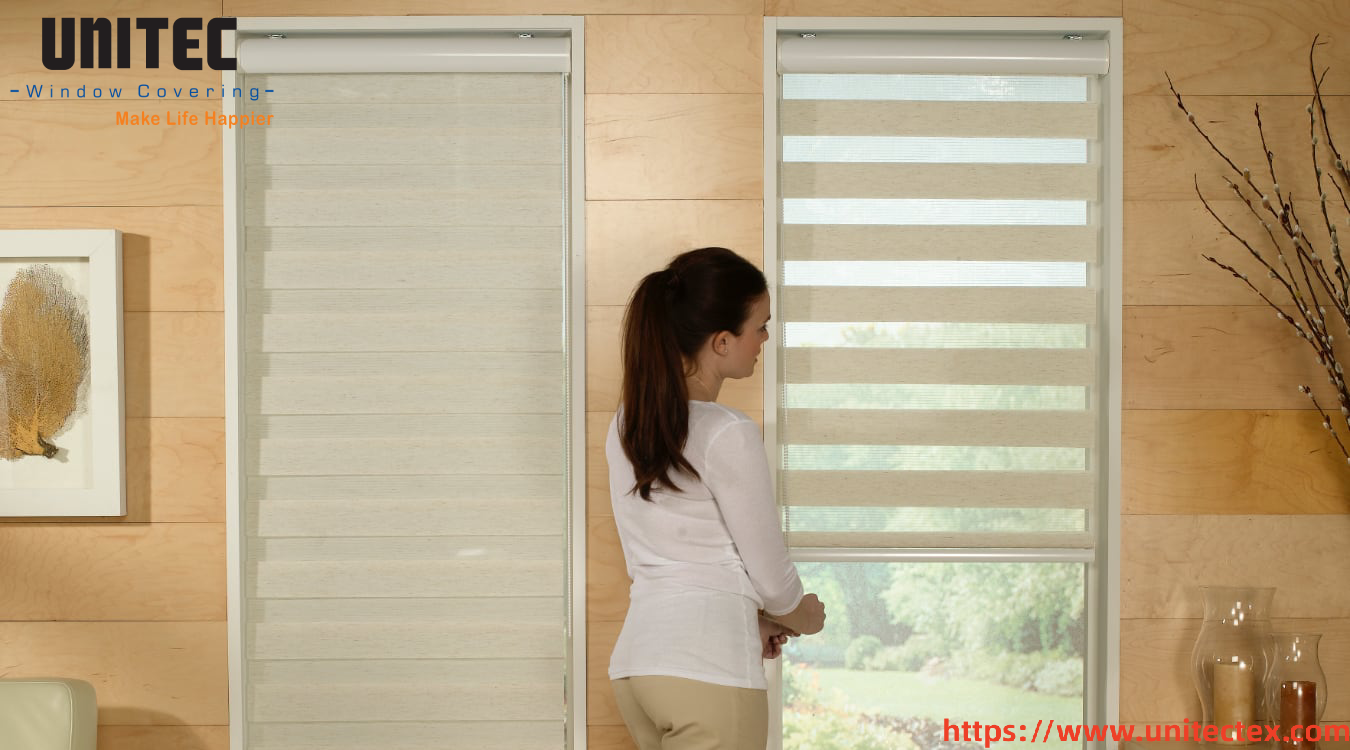
Best Rooms for Transitional Window Shades
Because of their flexibility, transitional window shades work beautifully in almost any room:
-
Living Room: Maintain privacy without blocking natural light during the day.
-
Bedroom: Choose a blackout option for better sleep, or use them as a stylish secondary layer.
-
Home Office: Reduce screen glare while keeping your workspace bright and open.
-
Dining Room: Add a soft, elegant ambiance with layered lighting.
They’re also ideal for commercial spaces like meeting rooms, lounges, and hotel suites.
Most transitional window shades are easy to install and maintain:
-
Installation: Can be inside- or outside-mounted depending on your window frame and style preference.
-
Maintenance: Made from durable polyester, these shades are typically dust-resistant and can be gently cleaned with a soft cloth or vacuum attachment.
-
Durability: High-quality transitional shades maintain their structure and color for years, even with daily use.
Installation & Maintenance
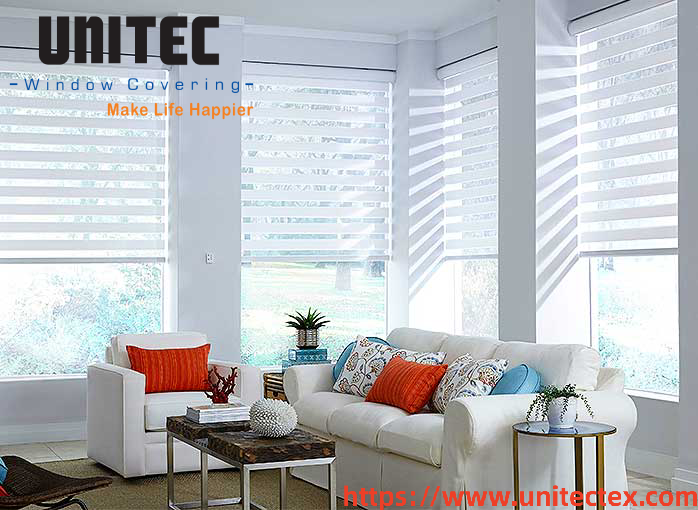
FAQs: What Brits REALLY Ask
Q1: What are transitional window shades?
A: Transitional window shades, also known as zebra blinds or dual-layer shades, feature alternating sheer and solid fabric bands that can be adjusted to control light and privacy. They offer a smooth transition between open and closed settings without needing to raise or lower the entire blind.
Q2: How do transitional shades differ from regular roller blinds?
A: Unlike traditional roller blinds that offer only open or closed positions, transitional shades allow for partial light filtration while maintaining privacy. By aligning the solid and sheer bands, you can achieve a soft diffused light or full coverage—all with one shade.
Q3: Can transitional window shades block out sunlight completely?
A: Yes. While many transitional shades are light-filtering, blackout versions are available for bedrooms or media rooms where full light blockage is needed. The blackout fabric is usually denser and comes with tighter weaves or additional coatings.
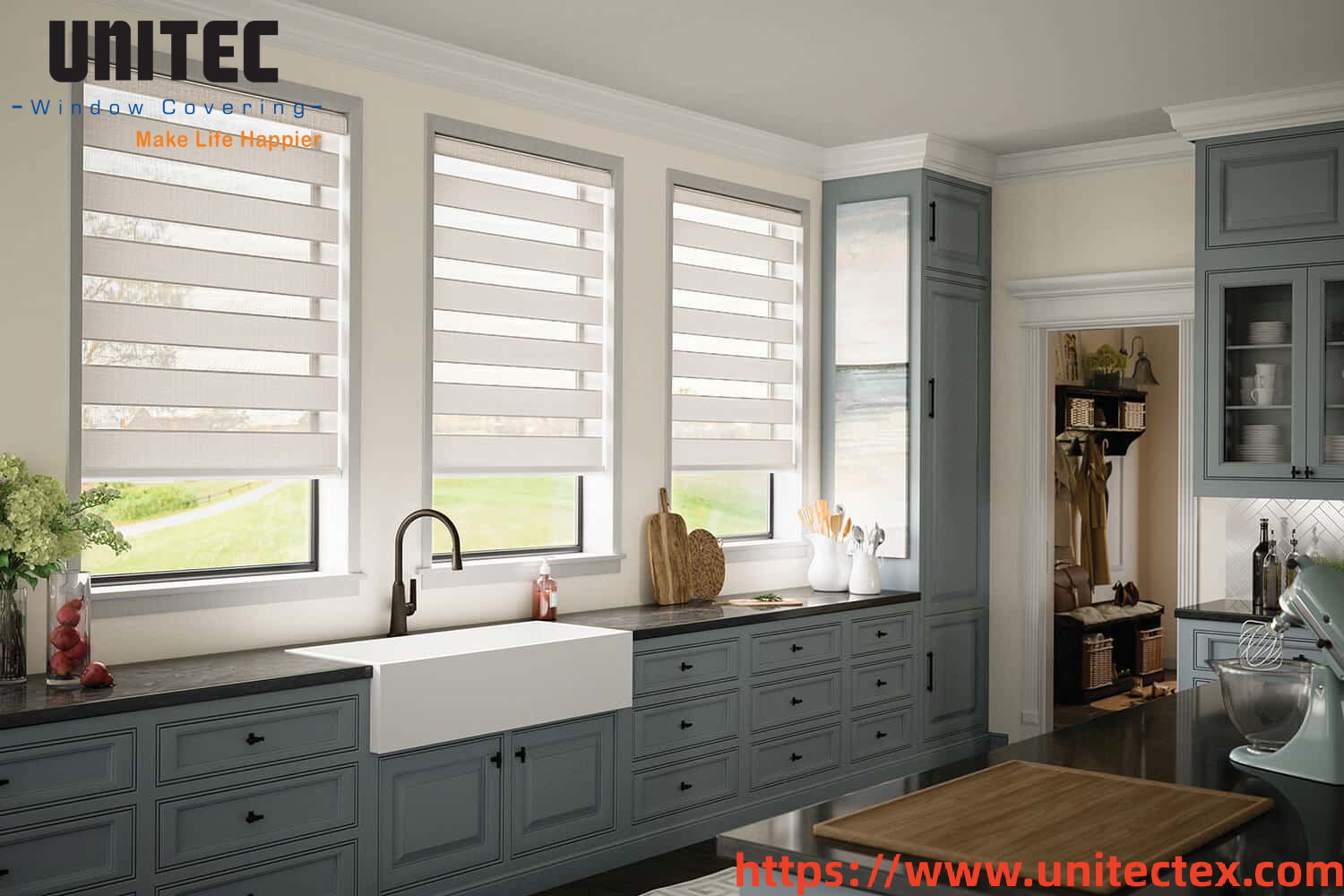
For more information about curtains, please follow us and contact us
Post time: Jun-29-2025




